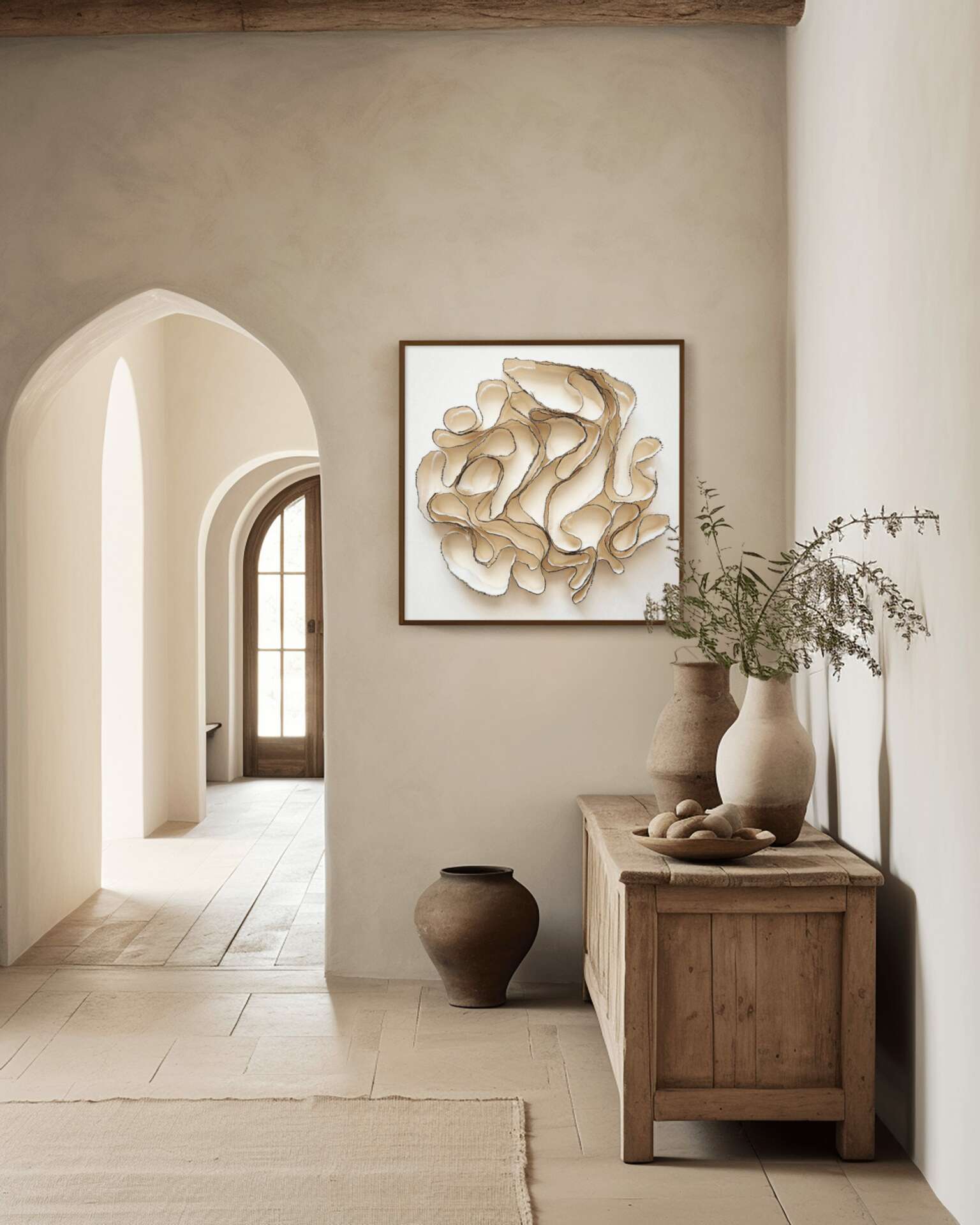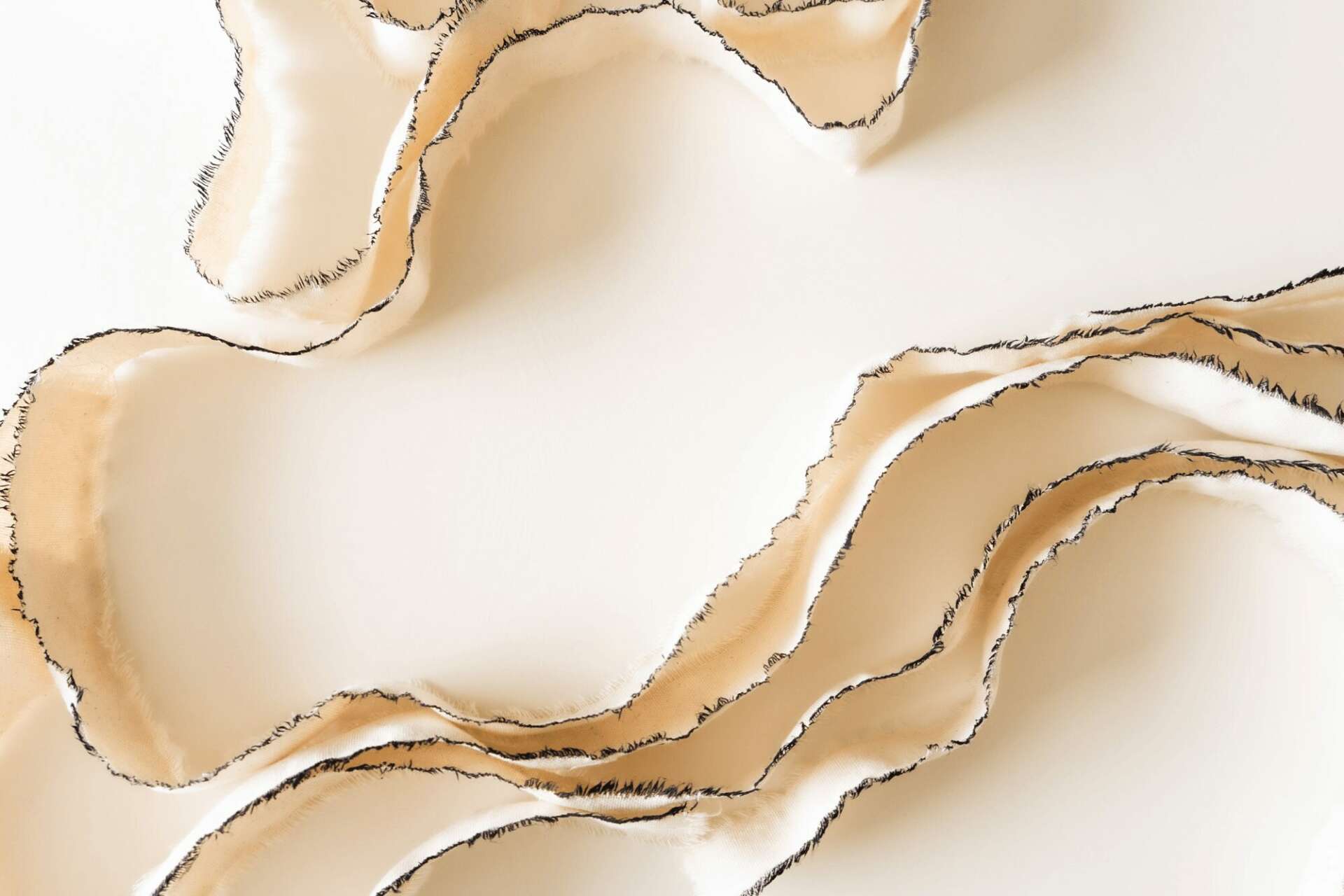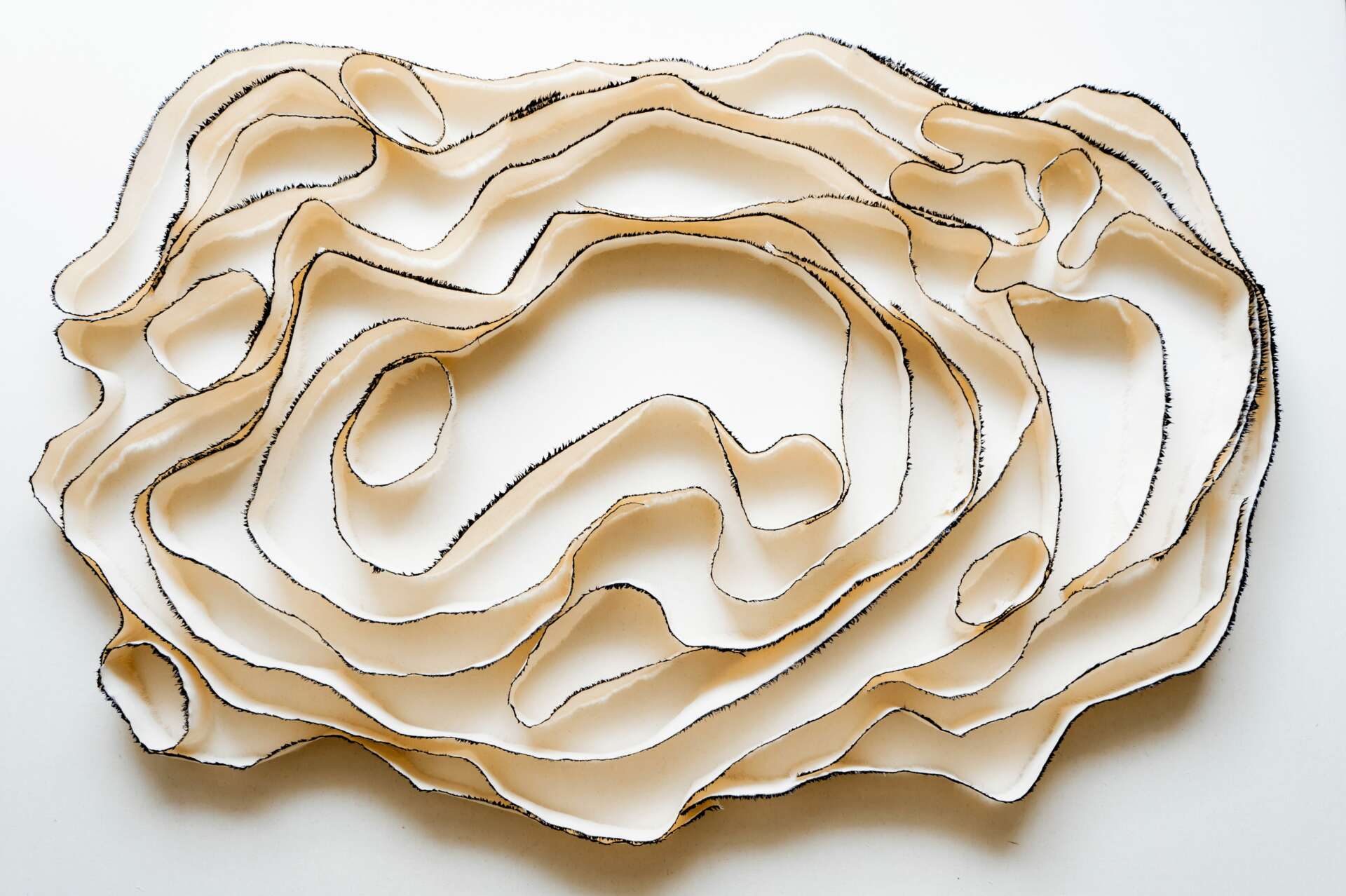We were lucky to catch up with Stef Shock recently and have shared our conversation below.
Alright, Stef thanks for taking the time to share your stories and insights with us today. Let’s start big picture – what are some of biggest trends you are seeing in your industry?
My work in fiber art was partially inspired by the influx in fiber art I’ve seen from artists who do macrame, needlepointing, weaving and three dimensional wall hangings. I’m so impressed with what I’ve seen so far and wanted to create in this genre but I didn’t know what that would look like until I simply looked at the canvas painters use. I asked myself “How can I make this thing all artists paint on into a medium, make it three dimensional? What would it look like to sculpt the canvas?” and soon after, my torn series was born.


Awesome – so before we get into the rest of our questions, can you briefly introduce yourself to our readers.
Like many people, my early childhood was a creative place where drawing and painting was always available chalk on cement, pencil to paper, crayons to a coloring book. I can see in my paintings the rules I created for myself when I was drawing inside the lines in coloring books. To this day, I struggle when I paint abstract because it doesn’t align with the rules I created for myself as a child “Stay inside the lines Stef” was something I’d repeat a lot in my mind as a child.
I’m lucky that the schooling system I was raised in encouraged the arts. We could choose the education we wanted and my classes were always arts-based in addition to the mandatory things like history, math and science. Therefore most of my high school days were spent doing photography, theatre classes, wheel throwing/pottery, sculpture….etc.
The fundamentals of my work today were built when I was between the age of 9 and 16. I recall assignments where we would sculpt with paper and wire in addition to the traditional medium of using clay. I picked up sculpture really easily and when I look back on that time, I regret not pursuing it further. Nobody was discouraging me, I just didn’t see how this could be a pathway in my life so I chose an equally risky path of pursuing theatre instead.
I’m proud of what I’ve accomplished in a short period of time, given that my art career started only three years ago. I definitely started out thinking my work wasn’t refined and that I was creating from a place of insecurity in what my own individual voice sounded like. When I created my torn portraits and the ribbons series, it was the first time I created something that came from deep within me and not a copy of what other artists are doing. I even notice now that I stopped following artists on social media because I’m in love with what I’m creating and I don’t want to be influenced by anyone else’s style.
The collectors that gravitate to my work are in search of some ambiance in their home. I’m not painting landscapes or figures so what emotion am I attempting to create in the space where my work hangs? Softness. Calm. Serenity. I don’t think we see a lot of that in the art marketplace. So much art today are super colorful abstract paintings. What can I create where people stop and say “Well that’s different!” I feel like I accomplished this with my torn series. A majority of the color in my work is just the cream of the raw canvas, which is very calming to me. I even feel calm as I’m making them. When the piece is done, I see sand, I see wood rings, I see flower pedals and sometimes I see croissants. It’s all very zen.


We’d love to hear the story of how you built up your social media audience?
This is a good question because social media is so essential today. I leaned into it a lot for the past 3 years and lately decided to post less. Many artists can agree with me that the followers we get are other artists. I don’t mind when an artist follows me but I’m only posting in order for my work to be seen for potential business and artists rarely purchase art from another artist. I make art for me, not for reels so one might ask, why do you continue to post at all? I know why I post and that’s so buyers can see that I am in the studio and the work is getting better and it’s always being made. That’s it. Therefore I only need to do it once a week or if I’m having fun with it and have a lot of content to share. Otherwise I think I’d get burnt out on it and that would effect my work.
I think social media is the new website for creatives. Whatever art form you are (musician, photographer, chef, writer) people will visit your social media before they go to your website. People want to see what you made this week, not something in an old portfolio. To me, that’s the only reason I post today, so that buyers, interior designers and art consultants can see what I’m doing right now.
I’ll admit something a lot of artists don’t want to admit and that’s the fact I sometimes boost a post in order to expand my audience. The only thing that has accomplished is getting more followers. I don’t think it’s done anything to sell my work. So if you’re new to art and you want as many eyes on your work as possible, there’s no shame in paying for followers via boosting your posts. One day you won’t need to do that unless you’re running a promotion or you want people to know that you’re doing a show or have a sale.


Let’s talk about resilience next – do you have a story you can share with us?
I think a large part of working in the arts is rejection and that’s something a lot of artists get comfortable with over time. I was a theatre major and had been performing on stage since I was four years old. When you audition for a part in a play, you’re competing with other actors. Odds of rejection are high so you have to get comfortable with it. This has helped me when it comes to my work and whether someone purchases from me or not.
Like many artists, I sometimes wonder if the reason someone didn’t buy from me is because of the price so I would move my pricing around and that wouldn’t make a difference with the amount of sales I was having. When I raised my prices back to the original pricing, boom, the sales came in. I think I was manifesting poorly and thinking in scarcity. When you price your work, you’re kind of telling the universe what you’re worth so if you reduce your price, you’re telling the universe you aren’t worth what you think you are. When someone doesn’t buy from you, they simply don’t want your work, it’s rarely the price. It’s better to think in these terms than to play with your pricing and minimize yourself.
I also have had the random insult to my work, which all artists receive. I decided to get comfortable with the occasional insult. I recently heard “You’re work is bland” from someone on Instagram. Anyone who calls my work bland simply doesn’t like minimalism. It’s not actually a statement about me as an artist. If you’re an artist who’s been called bland by someone, the person viewing your work probably wants complexity and color. It doesn’t mean your work is bland, it means your work isn’t for that person. If you’re an artist who has heard “My kid could do that”, then the person looking at your work isn’t aware of how much work was put into your piece, therefore you created something that looks easy to make…which is oddly a complement. When I first saw Fred Astaire tap dance, I thought it looked easy, and then I tried to tap dance.
Contact Info:
- Website: https://www.stefshock.com
- Instagram: https://www.instagram.com/stefshockfineart/
- Facebook: https://www.facebook.com/stefshockfineart


Image Credits
Stef Shock


